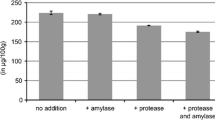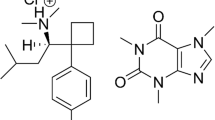Abstract
In the European Union (EU), food supplements are regulated as food and their use is expanding rapidly. There is no enforcement to ensure that good manufacturing practices (GMPs) are followed during production but manufacturers are fully responsible for their products. Recently, the safety and quality of supplements available in the market has come into question. In our surveillance, we examined coenzyme Q10 content of 58 food supplements available in three EU member states or from Internet stores using high-performance liquid chromatography methodology. While some of the tested supplements contained almost exactly the same quantity of active ingredient as labelled, one-third of the products contained <70% of the labelled content. In the food supplements obtained online the medium content was lower than in the products purchased in pharmacies. To protect the consumer and assure the safety and quality of products, the market authorities need to exert better control. In addition, it would make sense to enforce additional requirements to ensure GMPs are followed in the manufacturing process of food supplements.

Similar content being viewed by others
References
Aureli P, Fiore A, Scalfaro C, Casale M, Franciosa G (2010) National survey outcomes on commercial probiotic food supplements in Italy. Int J Food Microbiol 137:265–273
Betz JM, Fisher KD, Saldanha LG, Coates PM (2007) The NIH analytical methods and reference materials program for dietary supplements. Anal Bioanal Chem 389:19–25
Bhagavan HN, Chopra RK (2007) Plasma coenzyme Q10 response to oral ingestion of coenzyme Q10 formulations. Mitochondrion 7:S78–S88
Bourgoin BP, Evans DR, Cornett JR, Lingard SM, Quattrone AJ (1993) Lead content in 70 brands of dietary calcium supplements. Am J Publ Health 83:1155–1160
CIAA (2007) CIAA manual on nutrition labelling. http://www.ibec.ie/Sectors/FDII/FDII.nsf/vPages/Regulatory_Affairs~Consumer_Information~ciaa-nutrition-manual/$file/CIAA%20Nutrition%20Labelling%20Manual.doc. Accessed 24 Jan 2011
Cole MR, Fetrow CW (2003) Adulteration of dietary supplements. Am J Health Syst Pharm 60:1576–1580
Cuderman P, Stibilj V (2010) How safe are antioxidant food supplements containing selenium? Acta Chim Slov 57:668–676
DG SANCO (2006) Directive 90/496/EEC on nutrition labelling for foodstuffs: discussion paper on revision of technical issues. European Commission. http://ec.europa.eu/food/food/labellingnutrition/nutritionlabel/discussion_paper_rev_tech_issues.pdf. Accessed 24 Jan 2011
Eberhardie C (2007) Nutritional supplements and the EU: is anyone happy? Proc Nutr Soc 66:508–511
Eisenbrand G (2008) Evaluation of food supplements containing other ingredients than vitamins and minerals. Deutsche Lebensmittel-Rundschau 104:161–166
Frankos VH, Street DA, O’Neill RK (2010) FDA regulation of dietary supplements and requirements regarding adverse event reporting. Clin Pharmacol Ther 87:239–244
FSA (2010) The use of substances other than vitamins and minerals. Food Standards Agency. http://www.food.gov.uk/safereating/chemsafe/supplements/other/. Accessed 24 Jan 2011
Gershwin ME, Borchers AT, Keen CL, Hendler S, Hagie F, Greenwood MRC (2010) Public safety and dietary supplementation. In: Foods for health in the 21st century: a road map for the future, vol 1190, pp 104–117
IVZ (2009) Tolerance values for labeling of nutritional composition of foods. National Institute of Public Health. http://www.mz.gov.si/fileadmin/mz.gov.si/pageuploads/mz_dokumenti/zakonodaja/varnost_hrane/splosno-varnost_hrane/Microsoft_Word_-_HVtolerance_20.10.2008.pdf. Accessed 24 Jan 2011
Jaksic M (2010) Tednik TVS: Prodajajo macka v žaklju (28.01.2010). RTV Slovenija. TVS, Ljubljana. http://tvslo.si/predvajaj/tednik/ava2.58465018/. Accessed 24 Jan 2011
Jiang T (2009) Re-thinking the dietary supplement laws and regulations 14 years after the Dietary Supplement Health and Education Act implementation. Int J Food Sci Nutr 60:293–301
Kettawan A, Kunthida C, Takahashi T, Kishi T, Chikazawa J, Sakata Y, Yano E, Watabe K, Yamamoto Y, Okamoto T (2007) The quality control assessment of commercially available coenzyme Q(10)-containing dietary and health supplements in Japan. J Clin Biochem Nutr 41(2):124–131
Littarru GP, Tiano L (2010) Clinical aspects of coenzyme Q10: an update. Nutrition 26:250–254
Lunetta S, Roman M (2008) Determination of coenzyme Q10 content in raw materials and dietary supplements by high-performance liquid chromatography-UV: collaborative study. J AOAC Int 91:702–708
Marra MV, Boyar AP (2009) Position of the American Dietetic Association: nutrient supplementation. J Am Diet Assoc 109:2073–2085
Matsuda Y, Masahara R (1983) Photostability of solid-state ubidecarenone at ordinary and elevated-temperatures under exaggerated UV irradiation. J Pharm Sci 72:1198–1203
Osterc A, Stibilj V (2006) Investigation of declared values of iodine in food supplements on the Slovene market. Acta Agric Slov 87:245–253
Pravst I, Prosek M, Wondra AG, Zmitek K, Zmitek J (2009) The stability of coenzyme Q10 in fortified foods. Acta Chim Slov 56:953–958
Pravst I, Žmitek K, Žmitek J (2010) Coenzyme Q10 contents in foods and fortification strategies. Crit Rev Food Sci Nutr 50:269–280
Restani P, Persico A, Ballabio C, Moro E, Fuggetta D, Colombo ML (2008) Analysis of food supplements containing iodine: a survey of Italian market. Clin Toxicol 46:282–286
Ross EA, Szabo NJ, Tebbett IR (2000) Lead content of calcium supplements. JAMA 284:1425–1429
Skeie G, Braaten T, Hjartaker A, Lentjes M, Amiano P, Jakszyn P, Pala V et al (2009) Use of dietary supplements in the European Prospective Investigation into Cancer and Nutrition calibration study. Eur J Clin Nutr 63:S226–S238
Stibilj V, Smrkolj P, Krbavcic A (2005) Investigation of the declared value of selenium in food supplements by HG-AFS. Microchim Acta 150:323–327
Sturtz M, Lander V, Schmid W, Winterhalter P (2008) Quantitative determination of isoflavones in soy based nutritional supplements by high-performance liquid chromatography. J Verbr Lebensm 3:127–136
Vale G, Rodrigues A, Rocha A, Rial R, Mota AM, Goncalves ML, Fonseca LP, Capelo JL (2010) Ultrasonic assisted enzymatic digestion (USAED) coupled with high performance liquid chromatography and electrothermal atomic absorption spectrometry as a powerful tool for total selenium and selenium species control in Se-enriched food supplements. Food Chem 121:268–274
Žmitek J, Šmidovnik A, Fir M, Prošek M, Žmitek K, Walczak J, Pravst I (2008a) Relative bioavailability of two forms of a novel water soluble coenzyme Q10. Ann Nutr Metab 52:281–287
Žmitek J, Žmitek K, Pravst I (2008b) Improving the bioavailability of coenzyme Q10: from theory to practice. Agro Food Ind Hi Tec 19(4):8–10
Acknowledgments
We gratefully acknowledge the staff of the Cell Physiopathology and Bioenergetics Laboratory at Pablo de Olavide University, Seville, Spain, where chemical analyses of all the food supplements were performed, especially Prof. Dr. Juan Carlos Rodríguez Aguilera and Ana Cortés, Dr. Anita Kušar (Nutrition Institute) for her help with the literature search, Lenka Glavič for help with the collection of samples and Murray Bales for providing help with the language. The authors declare no conflicts of interest. The present study was conducted as a non-commercial research project and financially supported by the Nutrition Institute Research Fund (ID-M09).
Author information
Authors and Affiliations
Corresponding author
Rights and permissions
About this article
Cite this article
Pravst, I., Žmitek, K. The coenzyme Q10 content of food supplements. J. Verbr. Lebensm. 6, 457–463 (2011). https://doi.org/10.1007/s00003-011-0704-5
Received:
Accepted:
Published:
Issue Date:
DOI: https://doi.org/10.1007/s00003-011-0704-5




